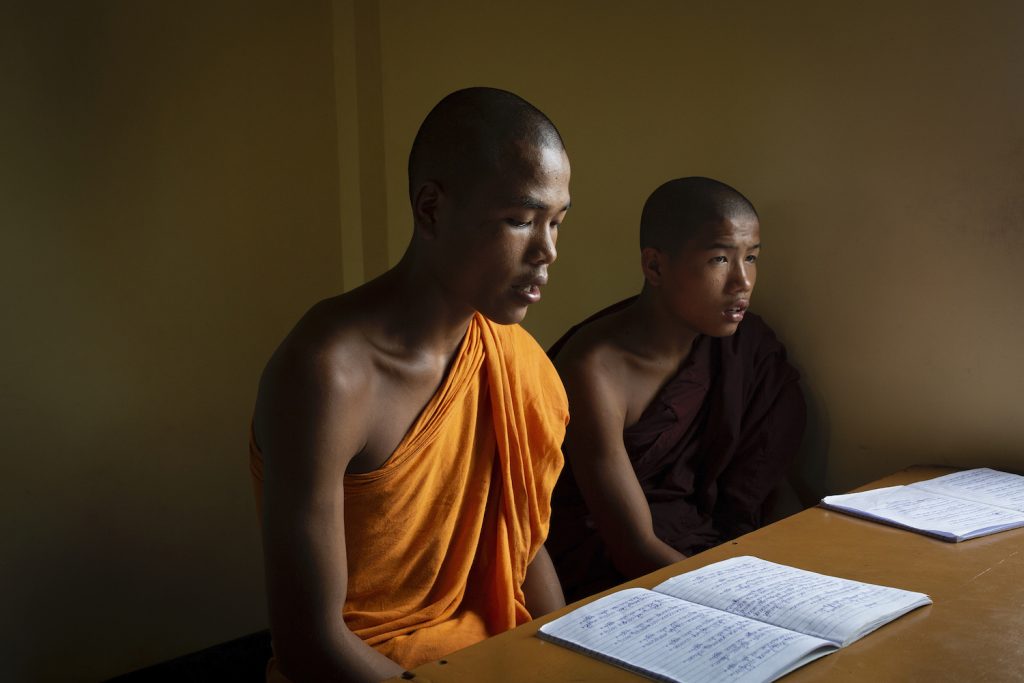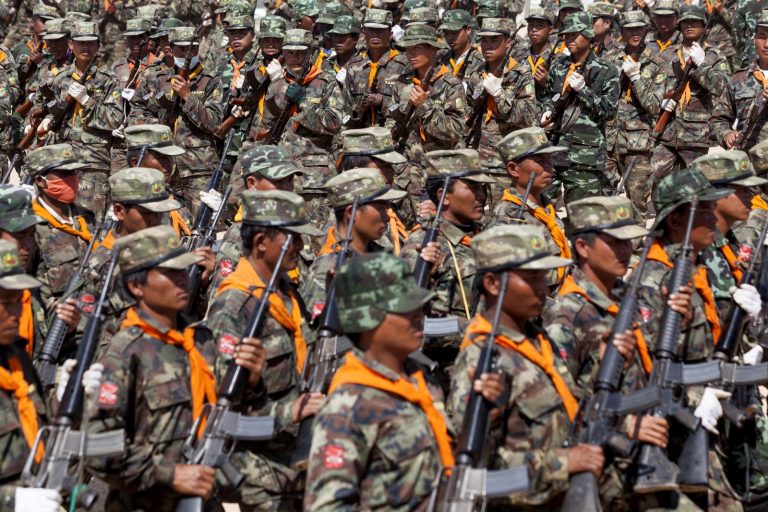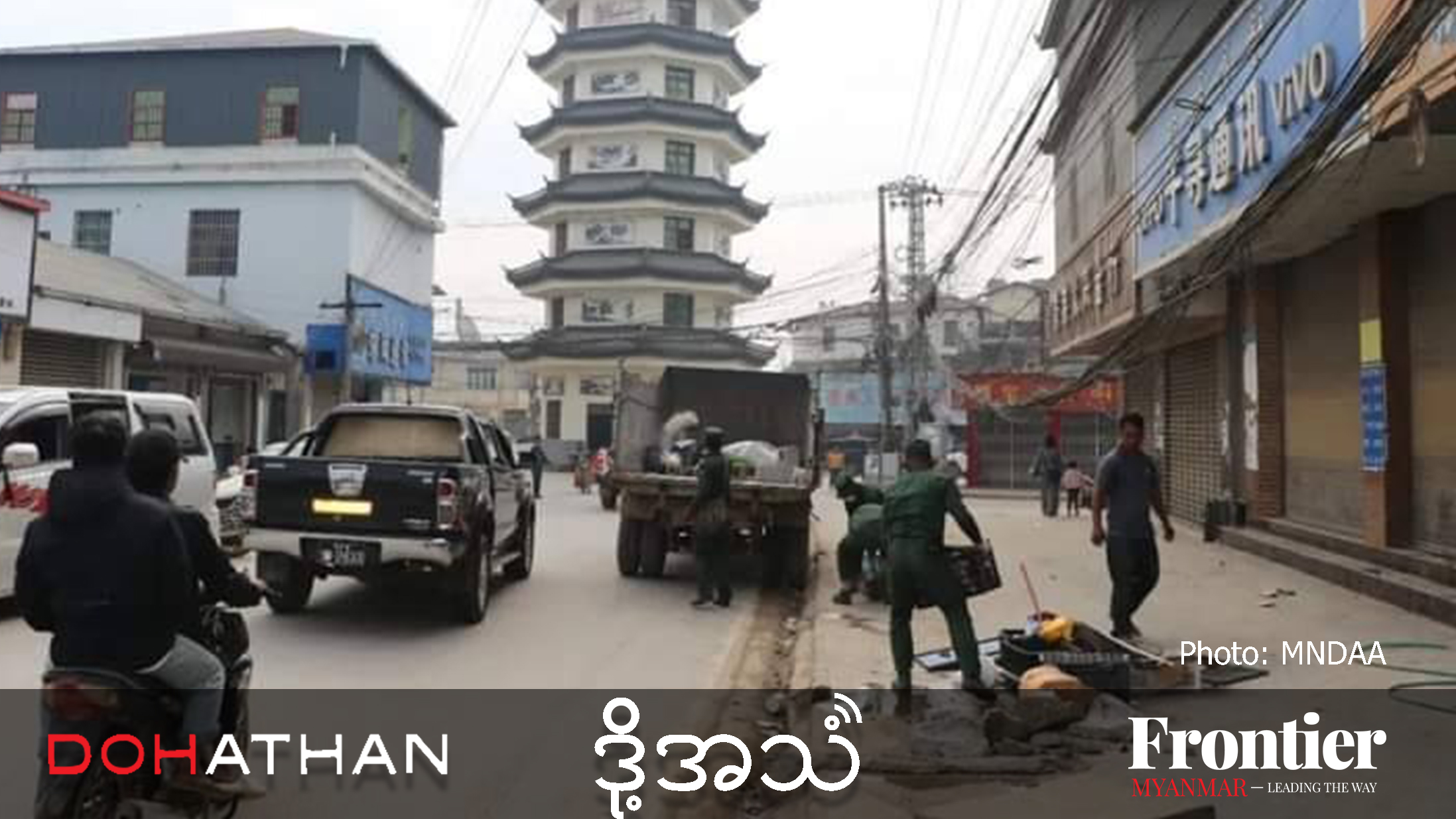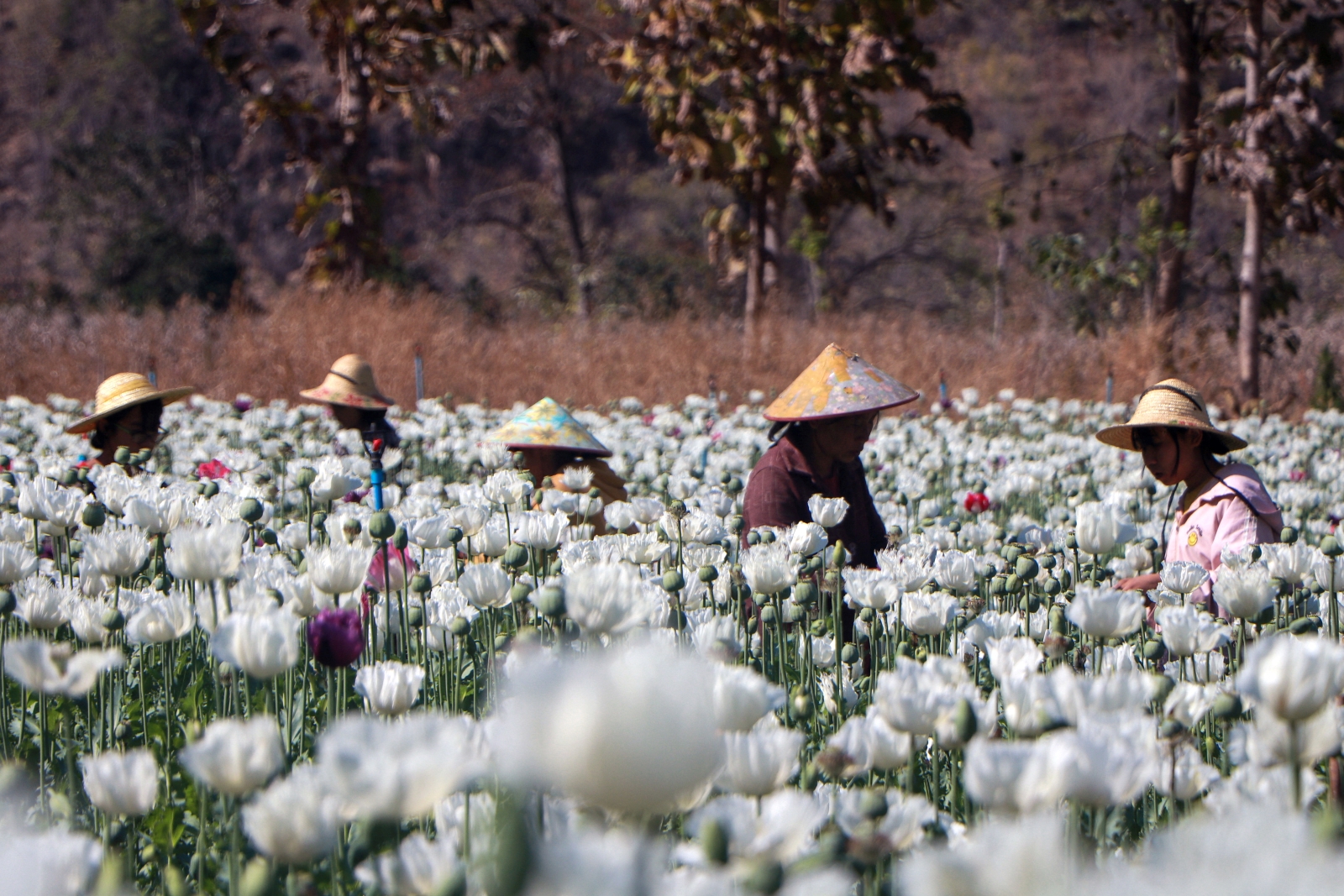The delayed reopening of monastic boarding schools in northern Shan State because of COVID-19 precautions has parents in conflict-affected areas in dread and fear for their children’s lives.
By HEIN THAR | FRONTIER
Normally at this time of year the din of hundreds of children at play would be ringing through Lashio’s Sake Ta Thu Ku monastic school. The school normally accepts about 2,000 Shan and Ta’ang children from poor and conflict-affected areas throughout northern Shan State each year.
This year, though, there were just a handful of monks and nuns around when Frontier visited Sake Ta Thu Ku, the state’s largest monastic school. Like other education providers throughout the country, its lessons have been disrupted by COVID-19.
“COVID-19 has made this a bad academic year,” said U Ponnya, 56, the school principal and chair of the Northern Shan Monastic School Supervisory Board.
Monastic schools, or ba ka kyaung, play a vital role in providing an education for children who live in remote areas or whose families cannot afford to send them to government schools.
The first monastic schools opened in the 11th century, after King Anawrahta embraced Theravada Buddhism. They were relegated to a secondary role by the British colonialists and banned under Ne Win’s socialist regime, which ruled from 1962 to 1988. In 1993, the military junta permitted them to reopen and teach the Ministry of Education’s national curriculum. They are recognised under the 2014 National Education Law and are co-governed by the education ministry and the Ministry of Religious Affairs and Culture.
Schools usually resume after the summer holiday in June, but COVID-19 has wreaked havoc with the academic calendar this year. Some high schools opened in July after having complied with an 82-point checklist aimed at preventing the spread of the coronavirus, but 600 of the nation’s 7,173 state-run high schools remained closed as of August 24, according to the education ministry.
The checklist grades schools according to their ability to comply with social distancing, said Dr Tin Maung Win, deputy director general of the Department of Basic Education. Still, only schools graded “A” are permitted to reopen. He said the checklists are the same for monastic schools as for government schools.
The re-emergence of COVID-19 in Rakhine State forced the government to close high schools again on August 27 in an attempt to curb the spread of the virus.
But when classes are eventually able to resume, monastic educators say they expect they will be among the last to reopen.
U Thumana, principal of the Nyein Chan Yay Kone monastic school in Kyaukme Township, said monastic schools are usually overcrowded, making it hard to implement the social distancing required at government schools.
“I don’t think they can satisfy the government’s requirements,” he told Frontier on August 6. “But we must try as hard as we can,”
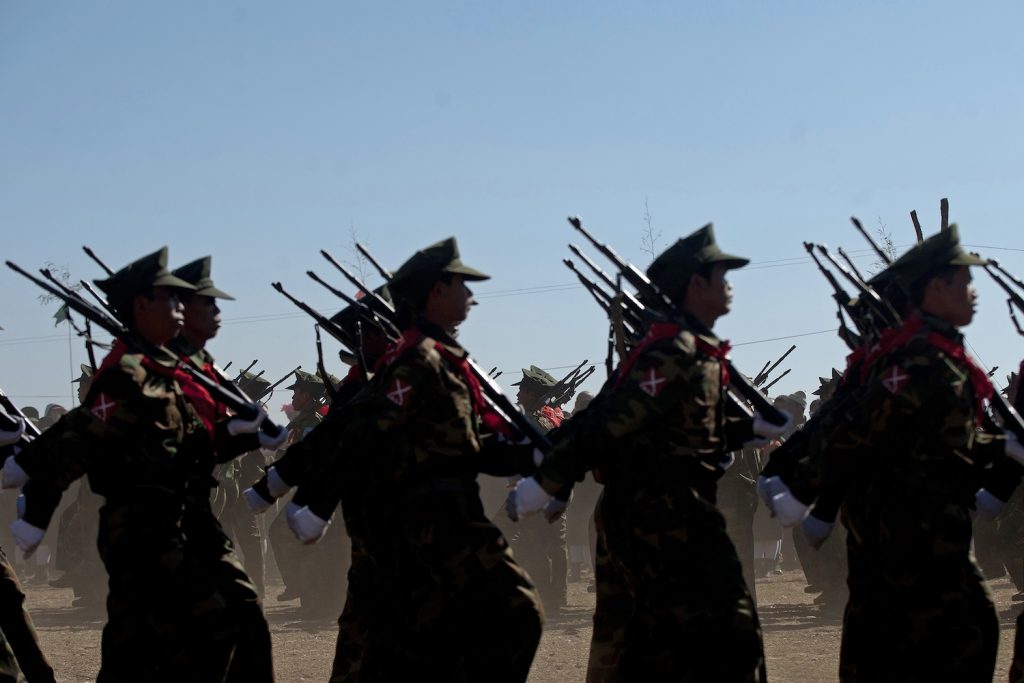
The revival
In northern Shan, these monastic institutions are more than schools. They are safe havens from the area’s long-running civil wars, which have re-emerged with new ferocity since 2015.
To avoid the fighting, many parents have sent their children to study at monastic schools in major cities in northern Shan or further afield, in Mandalay and Yangon.
Figures from the supervisory board for monastic education in Yangon Region show that in 2018 it had more than more than 280 monastic schools, attended by about 80,000 novices and nuns.
Sayadaw U Kuthala, who heads the supervisory board, told Frontier in late 2019 that more than 70 percent of the novice monks and nuns studying at Yangon monastic schools – more than 50,000 in total – are ethnic minority children from northern Shan State.
Similarly, most of the 11,852 middle and primary school students who attended ba ka schools in northern Shan last year were Shan and Ta’ang, mainly from Kyaukme, Namtu and Kutkai townships, where clashes between the Tatmadaw and ethnic armed groups such as the Restoration Council of Shan State (Shan State Army-South), Ta’ang National Liberation Army, and Kachin Independence Army are common.
For now, these students are forced to stay at home.
Thumana’s school typically has more than 400 students. In recent months he has had to turn away “hundreds” of parents from nearby villages who tried to enroll their children for the coming year.
“They said it is not safe in the villages, but we cannot help them,” he said.
Nang Wah, a Shan resident of Kyaukme Township’s Pang Kyin village, said she’s worried about what will happen to her two children, aged eight and 12, if they are forced to stay home rather than attend the monastic school.
“It is safer for them at the monastic school. They eat better there, too,” she said. “Sometimes in the village we have to run for cover when fighting breaks out. It’s very dangerous for them.”
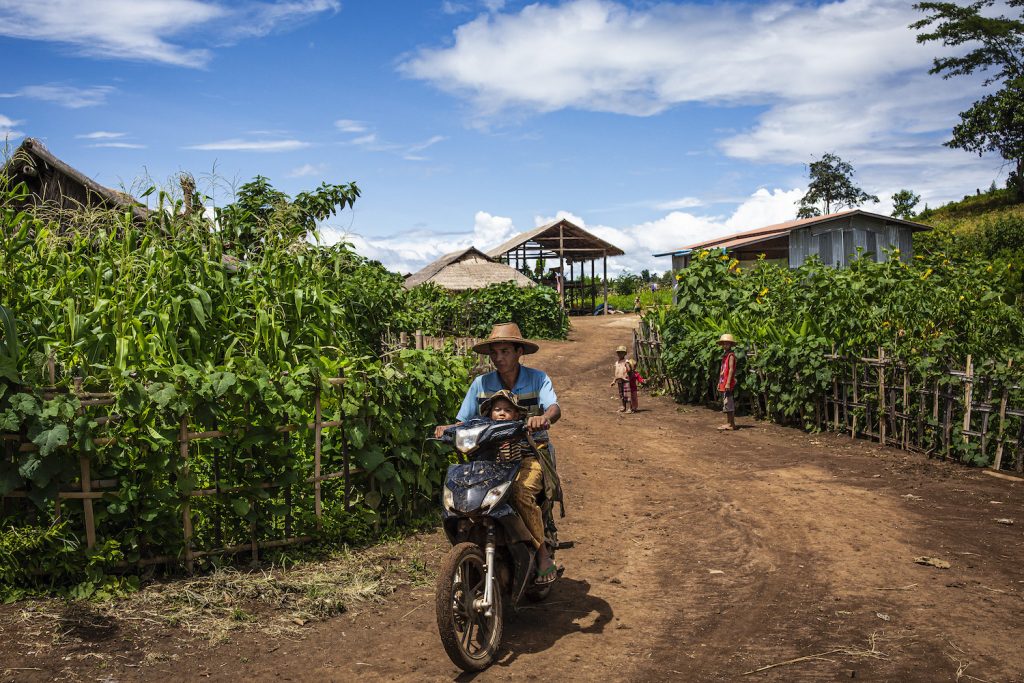
In late June, a resident of Pang Kyin – a farmer in his 50s – was killed by Tatmadaw soldiers who had entered the village after clashing nearby with the RCSS. The Tatmadaw later admitted that one of its soldiers was responsible for the attack, but claimed that it had occurred during a battle with the RCSS, contradicting the account of residents.
U Pyinnar Thiri, head of the Lashio-based Ta’ang Education Institute, said life choices were stark for ethnic children trapped at home.
In late July, a landmine blast killed a five-year-old girl and wounded four other children in a Kutkai Township village. Addiction is another threat to the wellbeing of children. Pyinnar Thiri said being close to the centre of one of the world’s largest sites of illicit drug production has made the risk of addiction extremely high.
With schools closed in northern Shan, another alternative was one of the “bad monasteries” in Yangon or Mandalay, he said, where senior monks force novices to beg for money on the street. “They just use their robes to make a living,” Pyinnar Thiri said.
Thumana said he’s worried that closures may force an end to some children’s schooling altogether.
“In the poorest areas, some children will have to go to work if they can’t go to school, and I’m worried they won’t return when we open back up,” he said.
The monastic school supervisory committee said it will try to open monastic schools when government schools reopen, but it acknowledged that complying with the checklist will be a challenge.
“If we cannot implement the social distancing rules and are unable to open, it will be our fault,” Thumana said. “But whose fault is it that more than 1,000 children cannot get a safe, quality education because they have to crowd into the small classrooms of a monastery?” he said, angrily.
Asked what the government’s August 27 closure order meant for the future of monastic education, Thumana said the authorities should provide the public with greater clarity about their plans for the current academic year.
“If all the schools are closed,” he said, “what will we do about this year? The ministry needs to explain its plans.”


